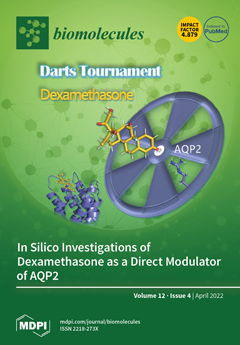Biomolecules, Volume 12, Issue 4 (April 2022) – 120 articles
In this metaphorical representation, dexamethasone is the dart and Aquaporin 2 (AQP2) the putative target finally identified with this work. The lateral chain of Arginine 187 is materialized in sticks.
Since Aquaporins (AQPs) are transmembrane water channels and are hence central in the regulation of transcellular water fluxes, we investigated the hypothesis that dexamethasone could impact water fluxes in the inner ear through direct interaction with AQP2. We addressed this question through unconstrained molecular dynamics simulations approaches that have shown that the dexamethasone molecule indeed reaches the target by itself and through its interaction with it impacts significantly the channel water permeability. View this paper.
- Issues are regarded as officially published after their release is announced to the table of contents alert mailing list.
- You may sign up for e-mail alerts to receive table of contents of newly released issues.
- PDF is the official format for papers published in both, html and pdf forms. To view the papers in pdf format, click on the "PDF Full-text" link, and use the free Adobe Reader to open them.






